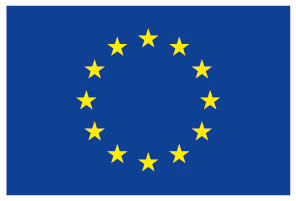Ontology Terminology
Ontology #
An ontology is an explicit specification of a conceptualization. The term is borrowed from philosophy, where an Ontology is a systematic account of Existence. For AI systems, what "exists" is that which can be represented. When the knowledge of a domain is represented in a declarative formalism, the set of objects that can be represented is called the universe of discourse. This set of objects, and the describable relationships among them, are reflected in the representational vocabulary with which a knowledge-based program represents knowledge. Thus, in the context of AI, we can describe the ontology of a program by defining a set of representational terms. In such an ontology, definitions associate the names of entities in the universe of discourse (e.g., classes, relations, functions, or other objects) with human-readable text describing what the names mean, and formal axioms that constrain the interpretation and well-formed use of these terms. Formally, an ontology is the statement of a logical theory. (source)
Ontology Components (source) #
Ontology languages are used to commonly encode ontologies. Many structural similarities are shared between contemporary ontologies, regardless of the language used to express them. The most usual and common components of ontologies comprise individuals (instances), classes (concepts), attributes, and relations.
Components of ontologies involve:
- Individuals: they are instances or objects (the basic or "ground level" objects) of classes
- Classes: they represent sets, collections, concepts, classes in programming, types of objects, or kinds of things
- Attributes: they constitute aspects, properties, features, characteristics, or parameters that objects (and classes) can have
- Relations: they indicate relations between classes or between individuals
- Function terms: they constitute complex structures formed from certain relations to be used in the position of an individual term in a statement
- Restrictions: they are formally stated descriptions indicating what must be true such that some assertion is to be accepted as input
- Rules: they are if-then (antecedent-consequent) statements specifying the logical inferences to be drawn from an assertion in a particular form
- Axioms: they are assertions (including rules) in a logical form that constitute the overall theory that the ontology describes in its domain.
- Events: they indicate the changing of attributes or relations
Ontology Types #
- Domain Ontology: A domain ontology (or domain-specific ontology) represents concepts belonging to a part of the world, where particular meanings of terms applied to that domain are provided (source)
- Upper Ontology: An upper ontology (or foundation ontology) is a model of common objects which are generally applicable across a wide range of domains and respective domain ontologies. A core glossary is usually employed containing the terms and associated object descriptions which are then actually used in various relevant domain sets. Widely-known and used upper ontologies include BFO, BORO method, Dublin Core, GFO, OpenCyc/ResearchCyc, SUMO, the Unified Foundational Ontology (UFO), and DOLCE. (source)
- Process Ontology: In computer science, a process ontology is a description of the components and their relationships that make up a process. A formal process ontology is an ontology in the knowledge domain of processes. Often such ontologies take advantage of the benefits of an upper ontology. The formal description of a process and its constraints in terms of a process ontology can be exploited during the process life-cycle. For example, during process design, plan generation based on these formal descriptions can be performed via planning software in order to concretize a process according to user-provided requirements/goals. Various process ontologies have been proposed, including PSL, Cyc, SUPER & DDPO, oXPDL, GFO and m3po & m3pl. (source)


